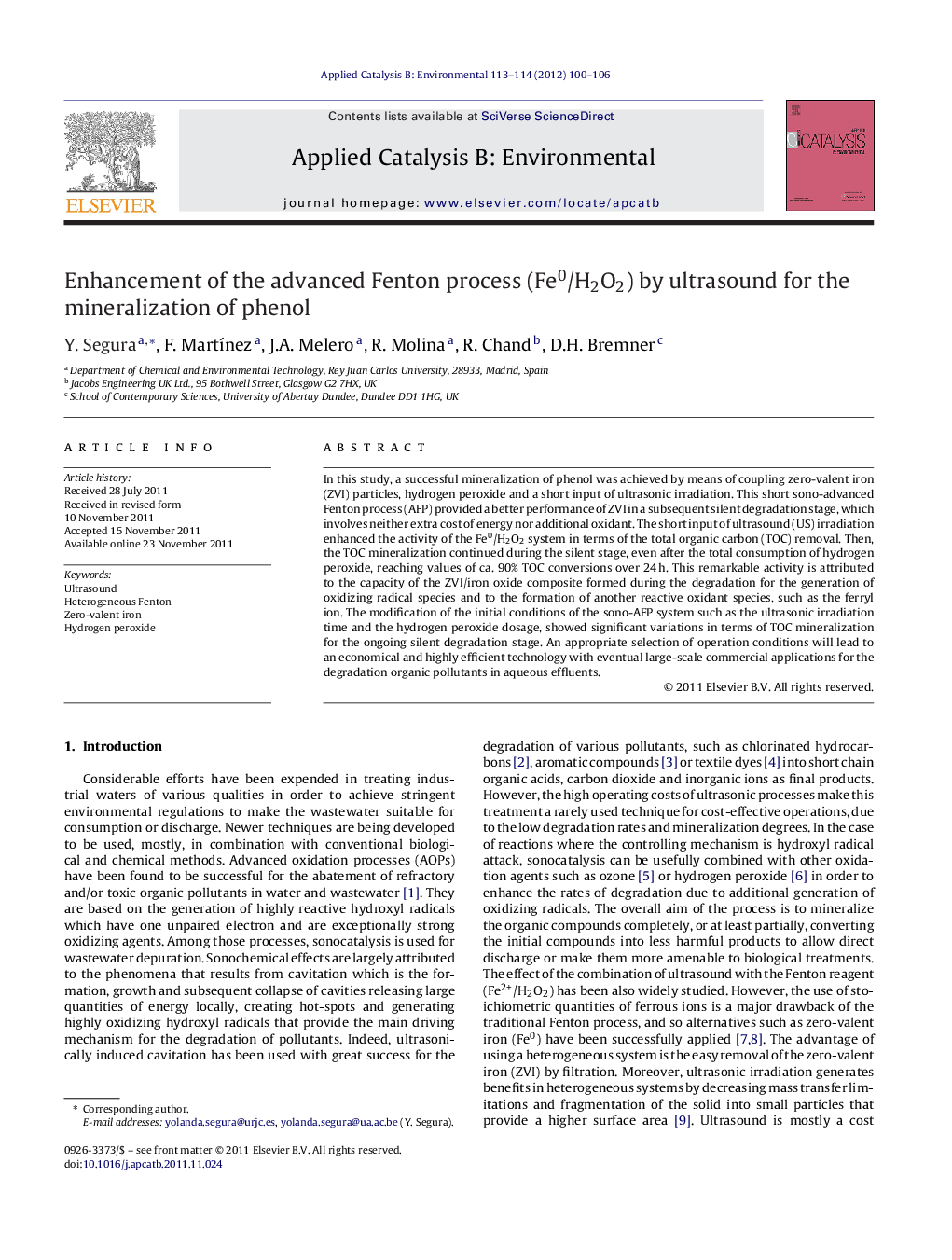| Article ID | Journal | Published Year | Pages | File Type |
|---|---|---|---|---|
| 46686 | Applied Catalysis B: Environmental | 2012 | 7 Pages |
In this study, a successful mineralization of phenol was achieved by means of coupling zero-valent iron (ZVI) particles, hydrogen peroxide and a short input of ultrasonic irradiation. This short sono-advanced Fenton process (AFP) provided a better performance of ZVI in a subsequent silent degradation stage, which involves neither extra cost of energy nor additional oxidant. The short input of ultrasound (US) irradiation enhanced the activity of the Fe0/H2O2 system in terms of the total organic carbon (TOC) removal. Then, the TOC mineralization continued during the silent stage, even after the total consumption of hydrogen peroxide, reaching values of ca. 90% TOC conversions over 24 h. This remarkable activity is attributed to the capacity of the ZVI/iron oxide composite formed during the degradation for the generation of oxidizing radical species and to the formation of another reactive oxidant species, such as the ferryl ion. The modification of the initial conditions of the sono-AFP system such as the ultrasonic irradiation time and the hydrogen peroxide dosage, showed significant variations in terms of TOC mineralization for the ongoing silent degradation stage. An appropriate selection of operation conditions will lead to an economical and highly efficient technology with eventual large-scale commercial applications for the degradation organic pollutants in aqueous effluents.
Graphical abstractFigure optionsDownload full-size imageDownload as PowerPoint slideHighlights► Activation of ZVI particles by a short input of ultrasound. ► Degradation values of up to 90% of phenol mineralization. ► No expensive catalyst, solvent, pH maintenance nor long-time external sources of energy are required.
